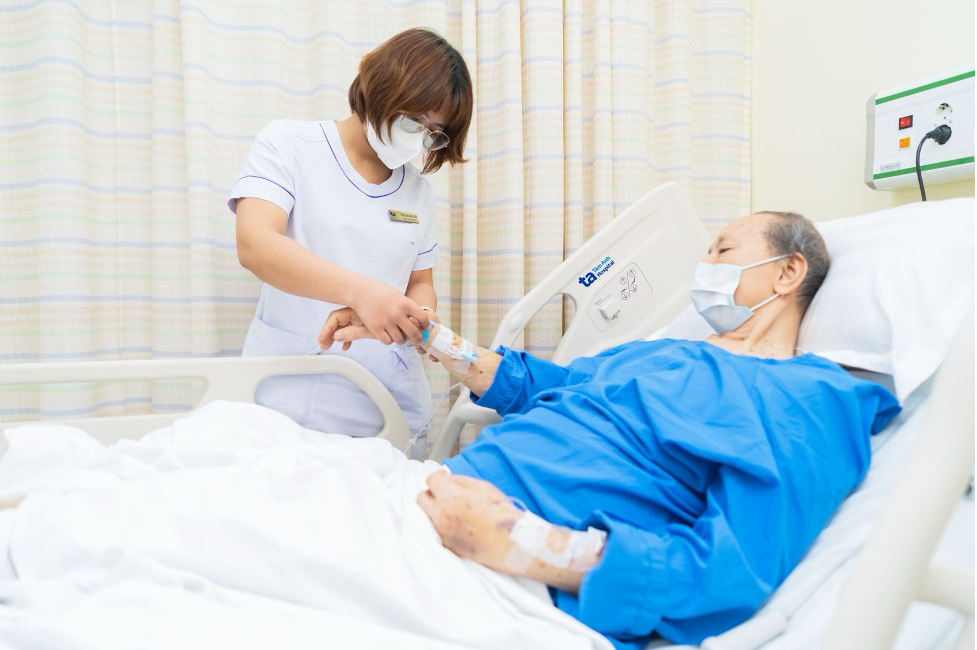A 1975-slice CT scan revealed that 88-year-old Nguyen Nhuong's gallbladder was significantly enlarged, measuring 7.5x9 cm (normal size is 3x9 cm). The scan also showed a fluid collection connected to the lower edge of his liver, adhering to the side of his duodenum, and the presence of gallstones. An ultrasound confirmed gallbladder inflammation and signs of necrosis, along with edema in the rectal wall and potential chronic pancreatitis.
Dr. Vo Ngoc Bich, from the Hepatobiliary-Pancreatic Department of the Endoscopy and Laparoscopic Surgery Center at Tam Anh General Hospital in TP HCM, explained that Mr. Nhuong's necrotic gallbladder was likely caused by prolonged obstruction due to gallstones. Without timely intervention, serious complications such as rupture, abscess formation, generalized peritonitis, and septic shock could have occurred.
Due to Mr. Nhuong's advanced age, recent prostate surgery, and existing conditions including high blood pressure, diabetes, arthritis, gout, and heart problems (for which he had a stent and pacemaker), coupled with his use of anticoagulants, immediate surgery was not feasible. After a consultation, doctors decided to temporarily stop his anticoagulants for five days before performing laparoscopic gallbladder removal. During this period, a drainage tube was inserted to relieve pressure on the gallbladder and prevent further infection.
 |
Dr. Bich (second from right) performs Mr. Nhuong's gallbladder removal surgery. Photo: *Tam Anh General Hospital* |
During the surgery, the medical team observed extensive necrosis in the inflamed gallbladder, which made it difficult to move. Significant bleeding in the hepatobiliary triangle led to the decision to perform a retrograde cholecystectomy (removal starting from the bottom of the gallbladder towards the hepatobiliary triangle), also extracting a 0.8 cm gallstone.
Mr. Nhuong recovered well after the surgery, able to walk after two days, consume liquids, and experienced relief from bloating. He has since been discharged.
 |
Mr. Nhuong receives post-operative care. Photo: *Tam Anh General Hospital* |
Dr. Bich noted that gallbladder necrosis often progresses rapidly, especially in high-risk individuals such as the elderly, those with diabetes, and those with weakened immune systems. The disease often presents no early symptoms, leading to late diagnosis and delayed treatment. Dr. Bich recommends regular health checkups and advises seeking immediate medical attention at a reputable facility if experiencing upper right abdominal pain, fever, chills, nausea, or vomiting to ensure timely diagnosis and intervention to prevent complications.
Quyen Phan












